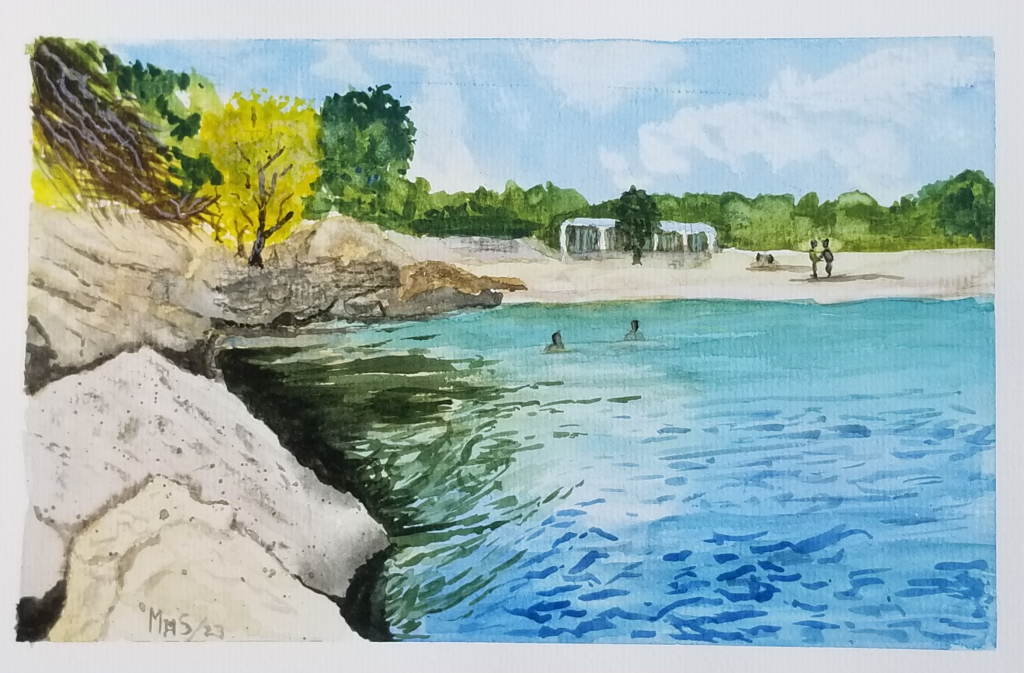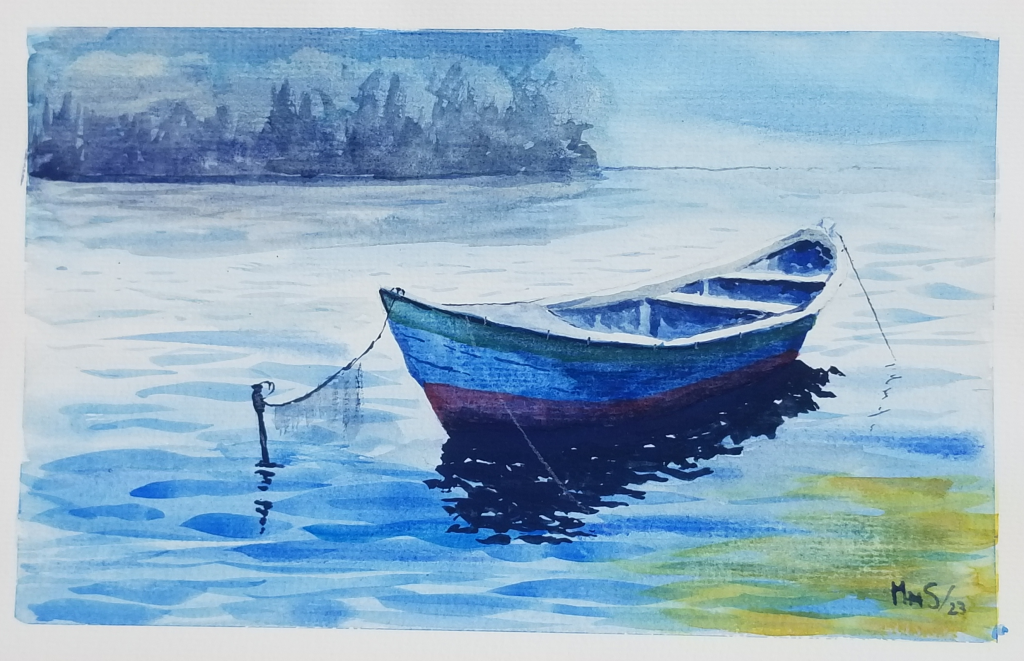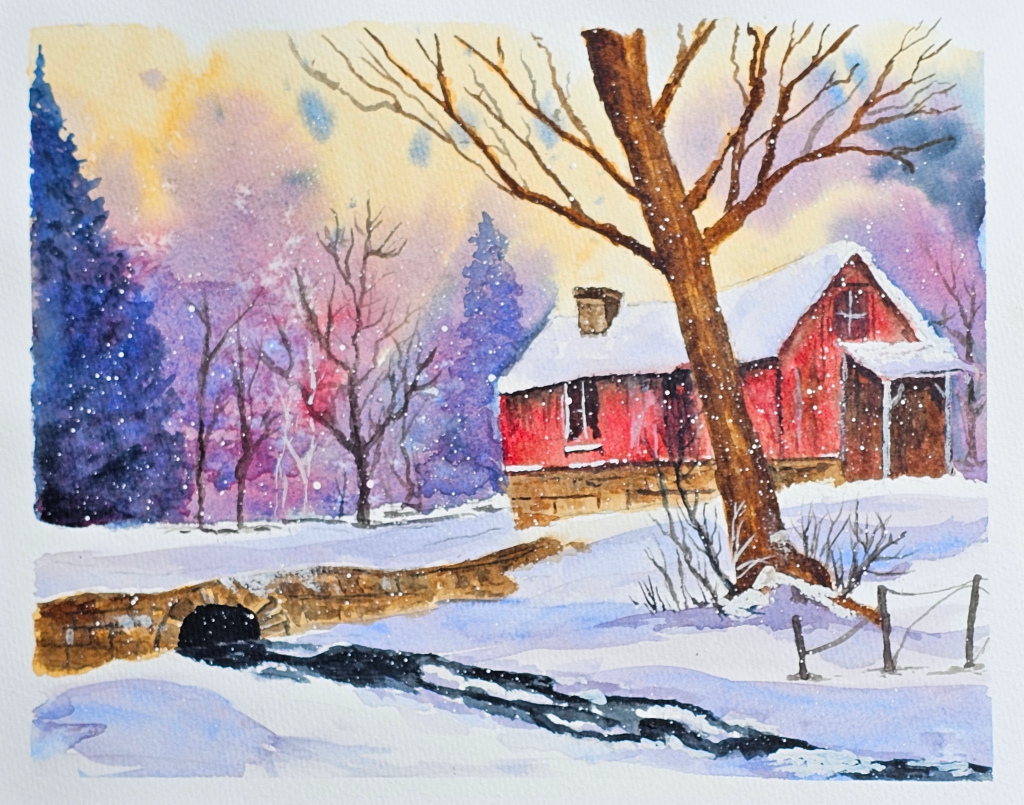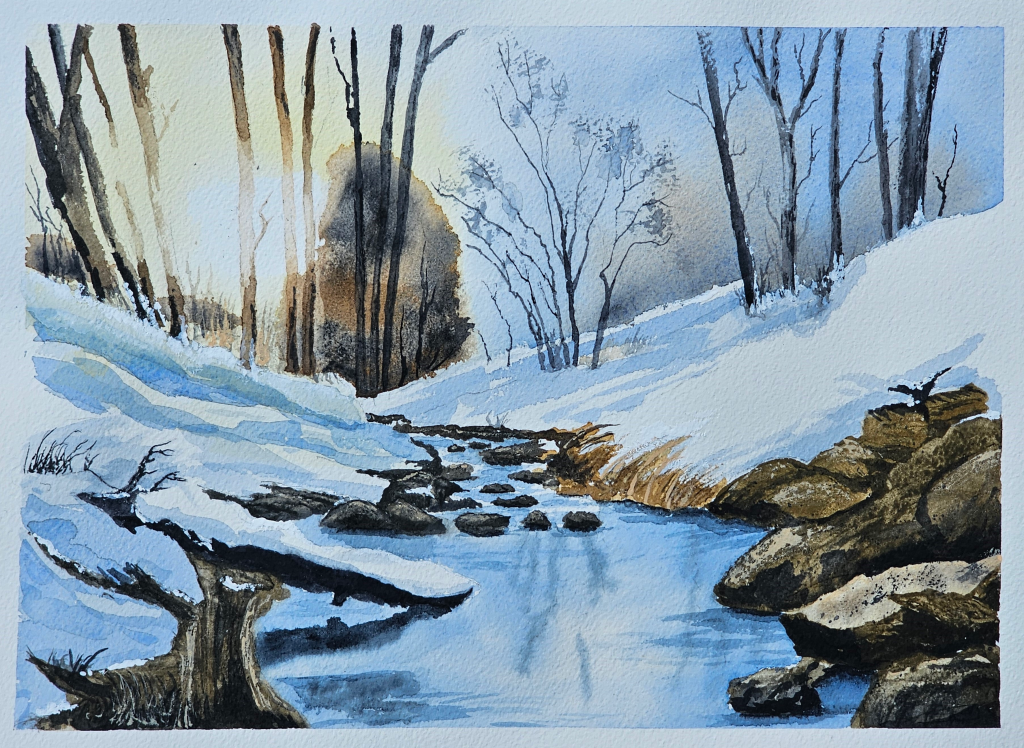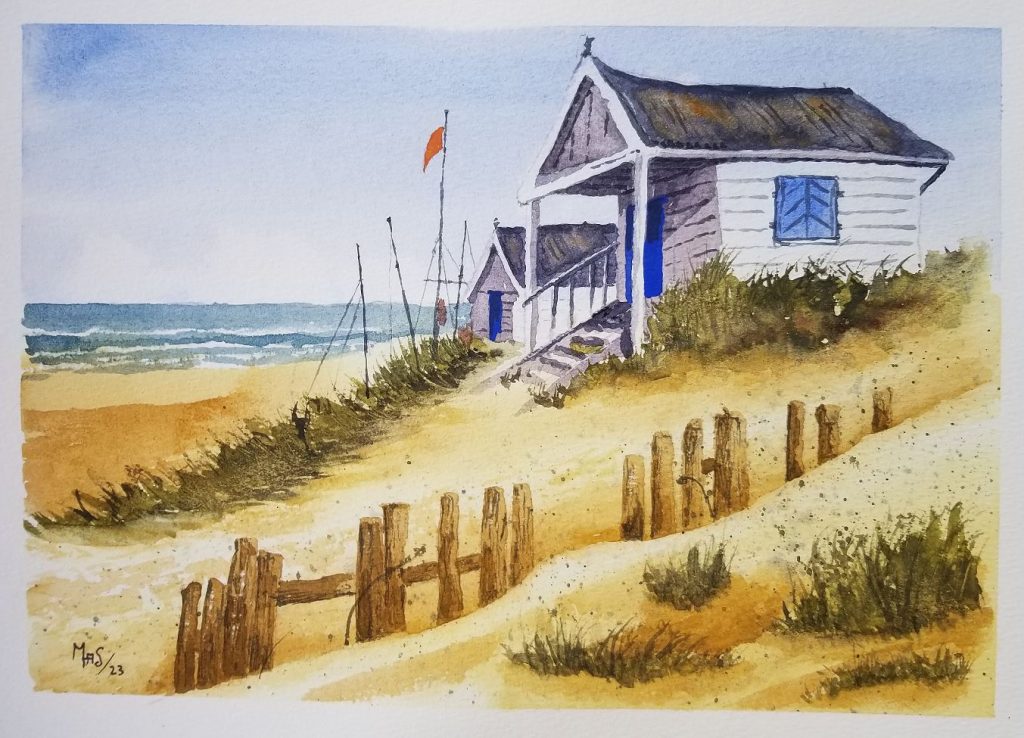I haven’t had any formal art classes since High School, but I have read a number of books and have done many tutorials from books and videos. So, it may appear I don’t know what I’m talking about at times, well, basically because I don’t. But I do want to share my experience both to help me study where I’ve been and where I’m headed and to perhaps help other novices who’d like to get into watercolor painting. I hope this all turns out to be a tribute to the many watercolor artists whose work I’ve admired and tried to imitate to learn.
I tried to get started in watercolor painting some years back through books when YouTube didn’t yet exist. Since about April of 2023, I’ve been trying to give watercolor painting a good try and consequently, I’ve really fallen in love with it. Now I still learn from some books, but most of what I learn is from tutorials on YouTube.
My goal in all this is learn how to do watercolor painting while having fun doing it. I’m learning by copying so when I try to do my own paintings, I have a gut feel for what to do. There are many aspects to that, so I won’t bother getting into what that means to me right now.
I’ve grouped my experience this past year somewhat chronologically, but mainly by the artists that have impacted me most.
Jenna Rainey
The first artist that caught my interest was Jenna Rainey. As I described to a friend of mine, here leaves and flowers just “popped” – they’d come alive to me as she painted. So, I bought some Princeton Heritage brushes (10, 6, 3, and 3/0 rounds and 3/4″ flat wash brush). Since I was just starting out, I used budget wood pulp paper (Cold Press 140 lb) and a bunch of Winsor Newton Cotman student grade paint. Jenna always said that getting good 100% cotton paper was a must, but I wanted to put in my dues with some cheaper stuff first. Basically, the lifting and wet and dry painting went quite well with the wood pulp paper, but I couldn’t match the motion and beauty of the wet-on-wet techniques Jenna demonstrated.
I found the leaves and trees most satisfying, but I had trouble with the flowers. I realized it was going to take a lot of work to get the techniques down and I didn’t really have a “feel” for flowers. It was neat when they’d turn out, but I didn’t have the eye nor the drive or the perseverence to get good at flowers. The more abstract, looser flowers would have been easier, but I think since I’m not really into flowers and probably due to my limited exposer to art as well, generally only the more realistic styles of flower painting appealed to me.
I did the practice paintings below using the tutorials in Jenna Rainey’s book Everyday Watercolor. If you want a closer look, right click on them and select Open in a New Tab. (I took pictures of these under LED lighting in the house. Now I take pictures of paintings outside!)
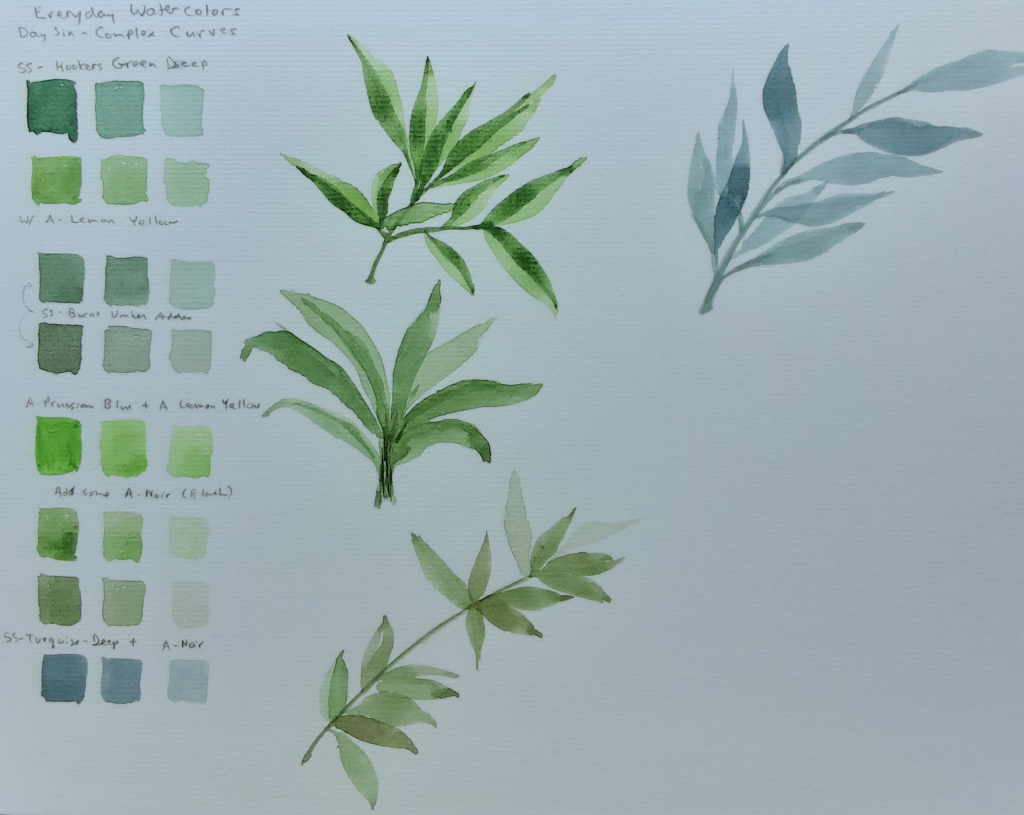
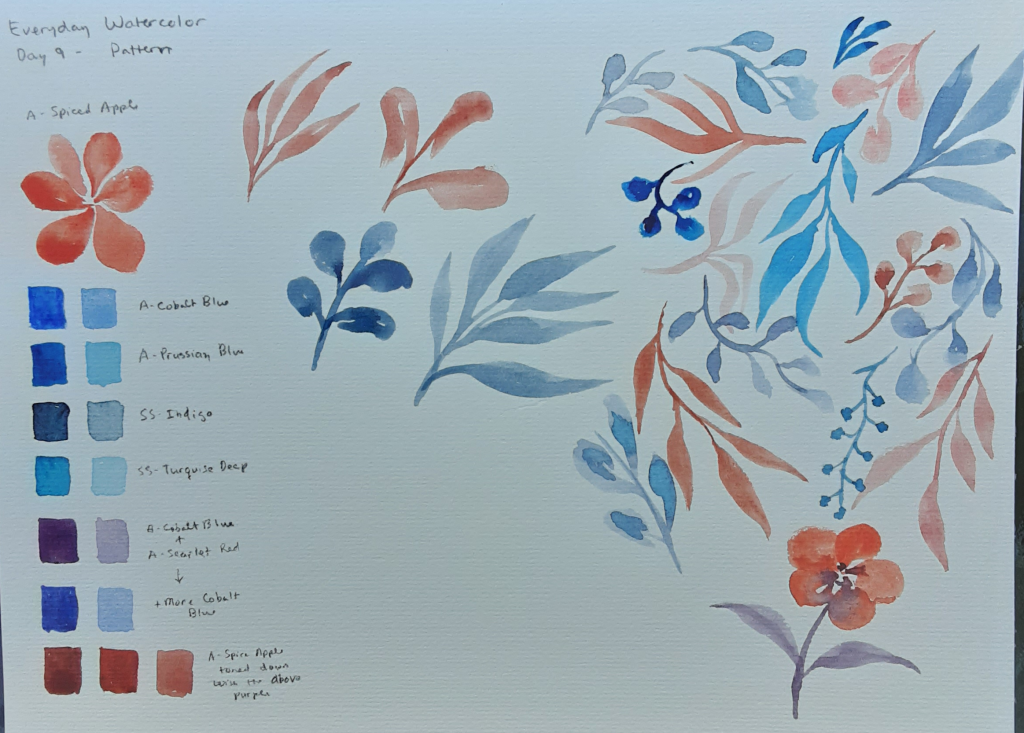
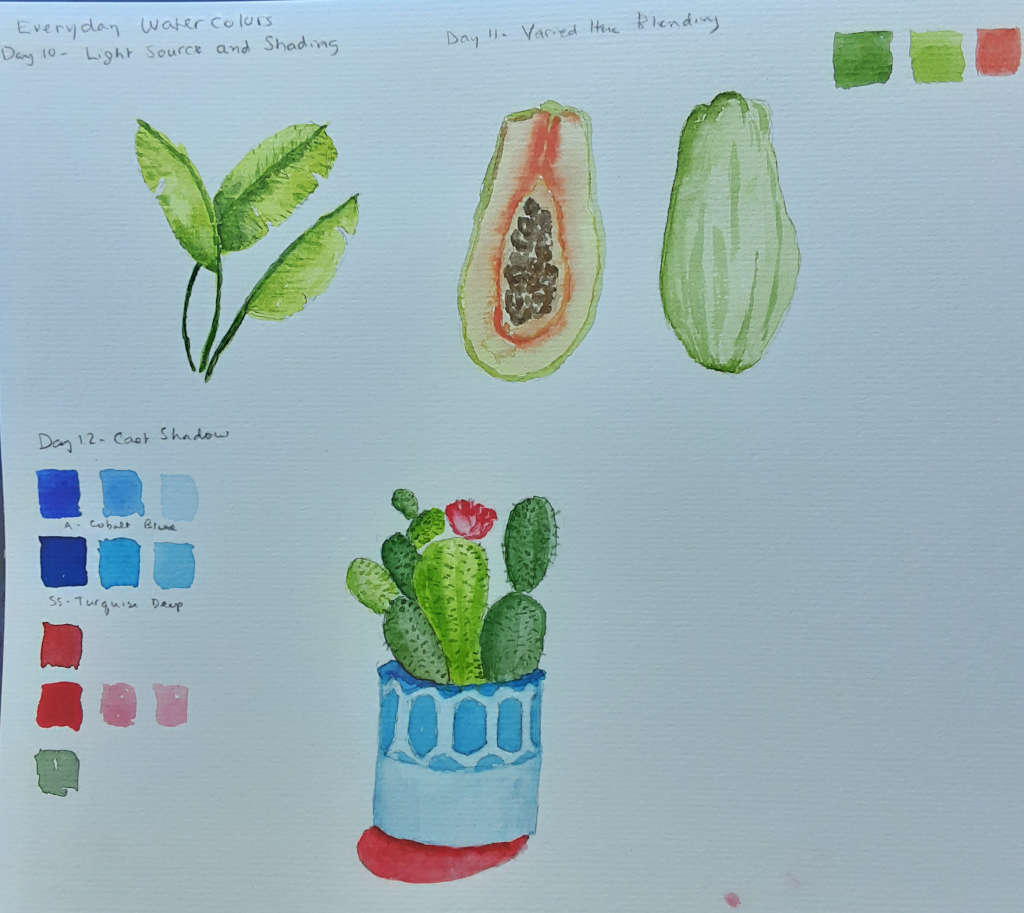
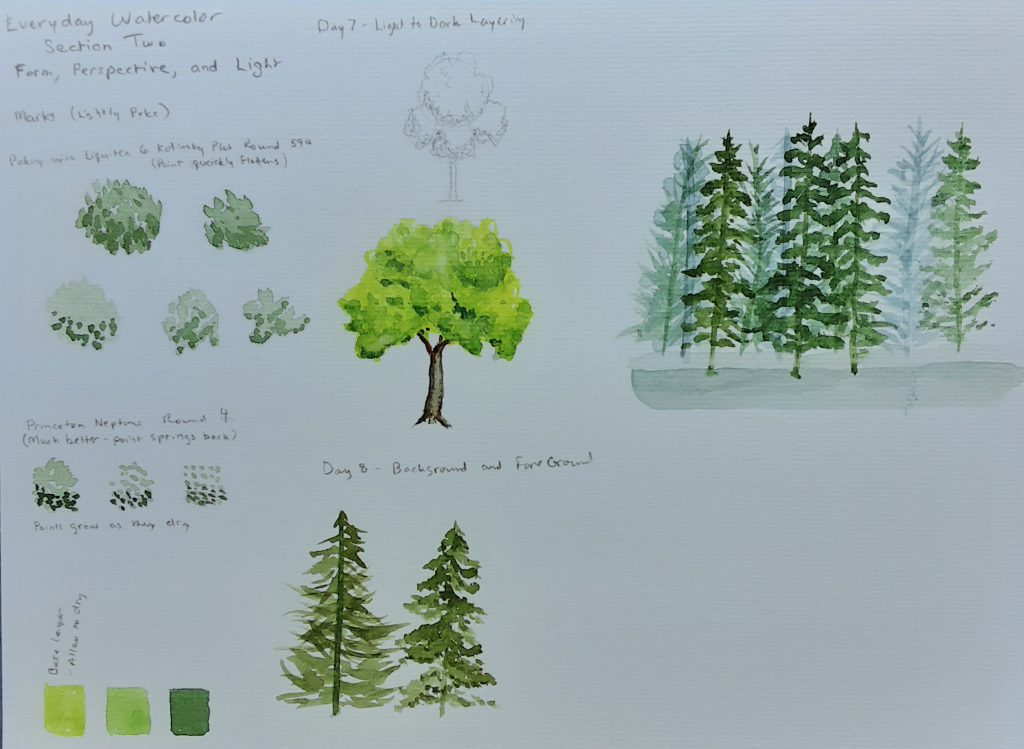
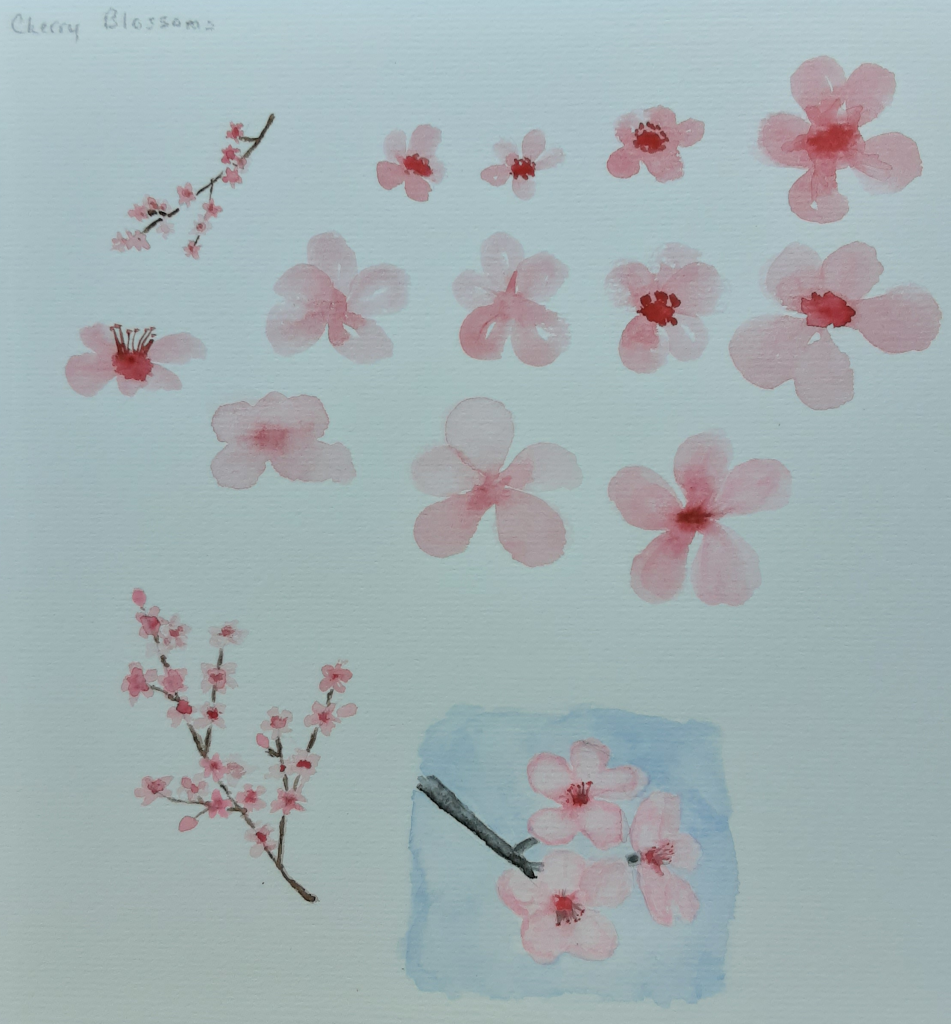
Paul Clark
Paul Clark’s work immediately caught my interest and my eye. My interests naturally lie in landscapes – probably due to all the Bob Ross videos I watched and paintings I did. I’m sure I don’t have very good art judgment skills, but I do have an innate feel for what I like and don’t like in landscapes. Paul Clark has techniques that rapidly produced quite realistic results while being very bright and vivid as well. I have to fight myself to not overdue the detail and I’ve been learning a lot from Paul’s art how to suggest detail without overdoing it. Like Bob Ross, Paul is a lot of fun to listen to as well.
Some of the paintings rely heavily on wet-on-wet techniques. I started doing Paul Clark tutorials using the wood pulp paper and Winsor Newton Cotman paints. Since then, I’ve switched to Winsor Newton Professional Watercolor paints and mainly Arches 140 lb Cold Press paper which is 100% cotton and a great quality paper. I like Saunders Waterford 140 lb Cold Press just as well, but it is not nearly as available and even more expensive. I really like the higher pigment content of the professional paints, but I think the Cotman paints would work OK. However, I’m sold on needing good, 100% cotton paper. The paint dries way too quickly on the wood pulp paper to do much with wet-on-wet techniques. The wood pulp paper does lift more easily, but don’t try too much – it will start to pill and tear on you quickly. Using good paper is necessary or it’s like you’re learning how to use a whole different media that’s much less forgiving and harder to use.
The gallery below shows some the paintings I’ve done from Paul Clark tutorials on YouTube (all free)!
